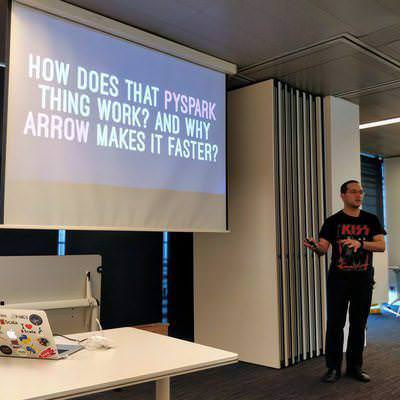Below you will find pages that utilize the taxonomy term “Time Management”
The year has ended, what has been going on?
I am trying to make these posts a tradition (even if a few days late). I thought 2016 had been a really weird and fun year, but 2017 has beaten it easily. And I only hope 2018 will be even better in every way. For the record, when I say we, it means Laia and me unless explicitly changed.
Snickerdoodles!
Do you have problems to keep motivated? Is your usual to-do list filled with great hopes of accomplishing 20 things? Do you dump it when you are wasted at 11 AM after finishing just the first 5 things? Of course, you are not alone. This is a very common thing, from freelancers to researchers, or to almost anyone managing their own time. But this can be due to eating radishes instead of chocolate chip cookies.
Using Taskwarrior Instead Of Emacs+Org Mode For To-Do And Appointment Tracking
6 minutes read | 1189 words
One of my fractal images
I have a confession to make: I’m not using emacs+org mode to keep my to-do list and appointments. What? The same emacs junkie that used emacs for (almost) everything last December gave up emacs? Yes, the same, but only gave up for this use case. I have some good reasons about why I am using TaskWarrior. Which does not mean that I could not be using emacs for the same, I just wanted to try something new.
Since I can remember, I’ve always tried to bite more than I could chew. Every time I’m stressed, or overworked I end up adding one or two new projects. I don’t know how. I try to pick up a new language, or start to play go again, or decide it is a good moment to learn stenography. These days, for example, added to my usual schedule are a new blog about meditation, I finally started the series on our road trip to Iceland and I am fighting my schedule to learn Gaelic.
This is the notebook where I keep my to-do list, like the one you can see in the picture in Book Review: Do It Tomorrow. A quick and cheap way to have a small multipage notebook you can always keep with you. Of course, calling this origami is a small lie, as you have to use scissors.
I read a very good post about going the analog way (How analog rituals can amp your productivity) and this was my tool.
If you are looking for the sample ebooks, open the post and scroll down a little.

Office mess. Yes.
That’s a Julia set in my wall
A pile of papers to read on the side. A stack of notes for several unrelated projects. Assignments to prepare. Questions to answer by email. Inbox full of unclassified mails. Lectures to prepare. Cluttered office desktop. Cluttered computer desktop.
A few weeks ago, Friday, this was what I saw when I looked at my office desktop. And I decided it was too much to bear and filed my first Task Bankruptcy.
Hey! Look! A squirrel!
GillesGonthier@Flickr
A few weeks ago I realised I was procrastinating too much. I tend to work in cycles, and it looked like my productive cycle was over and my procrastinator half had just kicked in the worse possible moment: lectures had just begun.
It looked like there was no solution. My timeboxing strategies went nowhere, will-do lists (litemind.com) had no real meaning, carrot-and-stick solutions didn’t work.
Stairs to Macchu Pichu,
courtesy of Shanidar
I just realised why I procrastinate in some tasks. And it may also be why you do, read on! It is not because they are boring, hard or repetitive. They may be. Hard tasks are a measure of your strength, boring and repetitive tasks, of your stamina. No, the problem is another.
Some projects are just tombstones. There are certain huge projects, with hardness and boredom along the way that when they are done, they are dead.
What? Biology and time management? Limiting factors? Okay, take it easy. First, let’s read this Wikipedia entry:
A limiting factor or limiting resource is a factor that controls a process, such as organism growth or species population, size, or distribution. The availability of food, predation pressure, or availability of shelter are examples of factors that could be limiting for an organism. An example of a limiting factor is sunlight in the rainforest, where growth is limited to all plants in the understory unless more light becomes available.
Music to listen with this post: Piotr Ilich Tchaikovsvkii’s Concert 35 D-major, Allegro (Spotify link , Youtube link). I’ll write why this piece in a forthcoming post.
_
If you are new here, have a look around and if you like what you find, don’t forget to subscribe.
_
A week and a half ago, @nochiel, a twitter follower retweeted the following, initially written by @marcoarment (lead developer of Tumblr and Instapaper):

